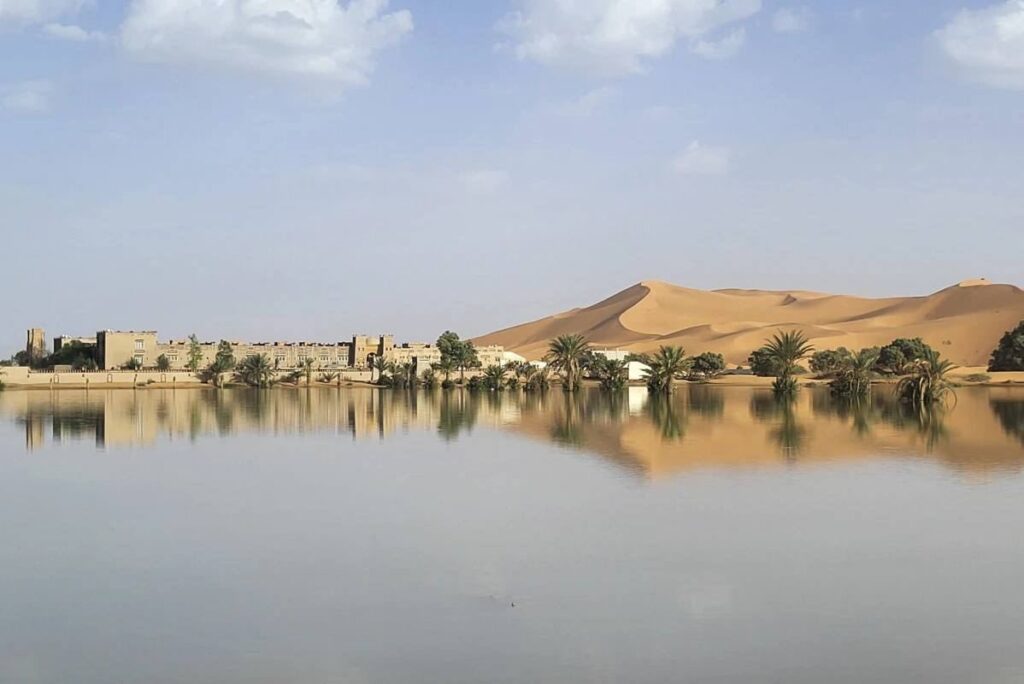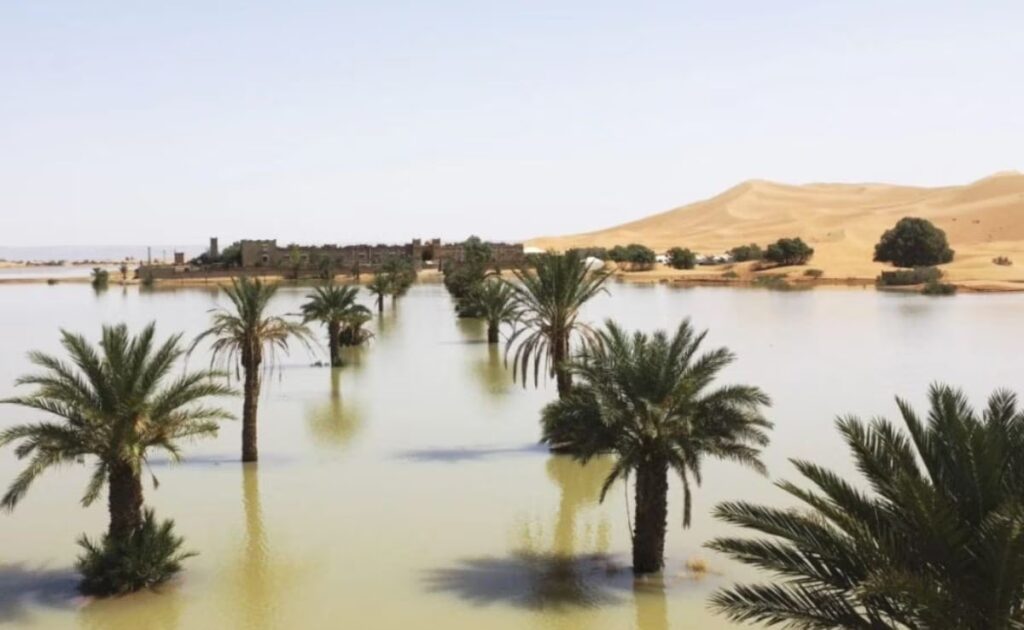The Sahara Desert has experienced severe flooding for the first time in 50 years, following two days of continuous rainfall in southeastern Morocco. This extreme weather phenomenon has dramatically transformed the arid landscape, particularly affecting the regions around Tata and the village of Tagounite, located approximately 450 kilometers from Rabat, Morocco’s capital.

Tagounite recorded an astonishing 100 millimeters of rain in just one day, surpassing the annual rainfall totals for many local areas. This rare occurrence took place during late summer, a time when rain is typically scarce in the region.
Shifting Climate Dynamics
Meteorologists are considering this rare rainfall as a potential indication of changing climate patterns in the region. Houssine Youabeb from Morocco’s meteorology office noted that such heavy rains have not been witnessed for decades. Experts suggest that increased atmospheric moisture could lead to more frequent extreme weather events in the Sahara.
Revival of Lake Iriqui
One of the most significant impacts of this deluge was the filling of Lake Iriqui, which had been dry since 1925. Satellite images captured the stunning transformation, revealing a striking water landscape amid the desert dunes and palm trees.

Long-Term Implications
Despite the immediate benefits of replenished groundwater and relief for farmers, experts emphasize the need for realistic perspectives regarding future climate challenges.
Effects on Agriculture and Communities
While the rains have provided much-needed relief to local farmers after prolonged droughts, the floods have also resulted in the tragic loss of at least 18 lives and significant crop damage across various areas. In response, the Moroccan government has initiated emergency relief efforts, particularly in regions impacted by last year’s earthquake.

Climate Change – A Growing Concern
Covering over 9 million square kilometers, the Sahara Desert is increasingly vulnerable to extreme weather linked to global warming. Scientists are observing more frequent storm events, necessitating adaptive strategies to address these climatic changes. Celeste Saulo, head of the World Meteorological Organization, warns that the global water cycle is becoming increasingly unpredictable, posing challenges for regions around the world.



